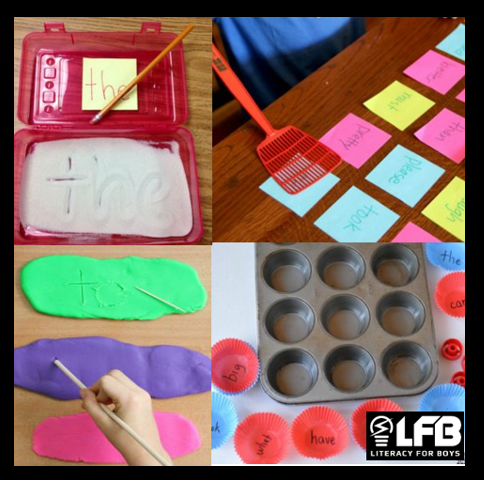An easy way for parents to teach sight words!

Reading is an essential early skill that underpins so much future learning. But what if your child finds it a struggle? How can you help them learn sight words easily? Let’s look at how you can help your child with reading, preparing them for the years of education ahead.
One of the most important purposes of any type of reading instruction is to help a child to see and automatically know a word. For example, if a child sees the letters “t”, “h”, “a” and “t” and spends alot of time trying to sound it out, then their reading has been impacted.
Automaticity is the ability to recognise words automatically. You know your child has mastered automaticity when he/she can easily identify words both in isolation and context. However, we know that many words can only be learned by sight because they do not follow a phonetic rule (e.g. “would”, “said”, “know”).
High frequency words are very common words. Create a list of words that your child already knows (for example “a”, “I”, “in”, “if”). Add to this list as your child reads – this will help to motivate him/her to learn new words. Here is a list of both high-frequency and sight words. (There are about 100 words that make up almost half of all the words your child is likely to come across while reading in primary school.)
Easy Steps to Learn Sight Words
Here is a method that I have used for many years in both the classroom and when tutoring, with many different types of learners:
-
- Write common words on cards. Neatly print the words (do not use cursive writing as it does not appear in printed text in books).
- Place only 10 (or fewer) cards face up. If you are starting with unfamiliar words, then I suggest no more than 5 cards.
- Allow your child to study the words until he/she is ready to select one.
- If you child reads the word correctly, place it to the side. If your child mispronounces the word, tell them the word correctly, then place it in a different pile.
- Complete the above process until you have 2 piles.
- Place the cards that your child missed for round two on the table.
- Ask your child to look at the words for as long as they like to see if they can recognise any of them. You might say, “Once you are pretty sure you know a word, point to the card and say the word.”
- If they read it correctly, place the card to the side.
- If your child doesn’t get the word correct, say, “You were close.” Show your child the difference by writing their attempt directly underneath the word on the card. Point out the similarities and differences between their attempt and the correct pronunciation. If you child says “sholled” for “should”, tell him/her that they had the correct “sh” sound then explain the correct pronunciation of the word.
- When you do this exercise in the future, your child should be able to read both words on the card.
NOTE: If your son/daughter doesn’t feel confident in choosing a card, you can say a word and ask them to locate it.
If you don’t mind a bit of messy fun try this:
- Buy some shaving cream. Spray the shaving cream (cream, not gel) onto a cooking tray. Ask your child to write sight words in the shaving cream using their fingers. Sensory learners may find this helpful as they “feel” how the words are formed.
We hope you find success in teaching your child sight words with the above strategy! With patience and time, children will start to realise “I can read!” Confidence in their reading helps them to gain momentum in their learning and school work.
Extra fun:

a) Ask your child to copy their sight words in sand.
b) Swat it! As you call out a word, the child has to hit it with the fly swatter.
c) Use a variety of methods (toothpick, pencil, paintbrush end) to write sight words in play dough.
d) Muffin Maze! Place words in the muffin tin. Say a word aloud and your child has to put a marker (e.g. counter/milk lid) on top of the word. Can they get 3 in a row? Or 4 in a column?
Check out our blogs for more ideas and tips.
Boys Love LFB – Here’s what they have to say!
Get boys reading in the digital age
Why write? Tips for reluctant writers
Brought to you by Tanya Grambower
